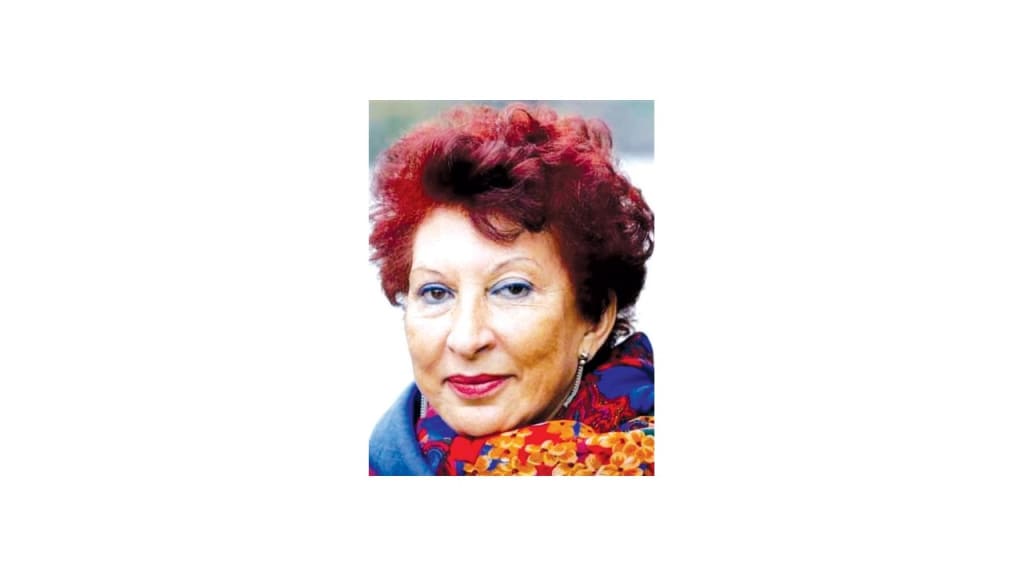
Feminism by FatemaMernissi (1940-2015)
Fatema Mernissi was born in Morocco on September 27, 1940, and she passed away in Rabat on November 30, 2015. She was a Moroccan sociologist and feminist writer. She began studying political science at the Sorbonne in Paris in 1957 before continuing her studies in the US at Brandeis University, where she earned her PhD in 1974.
Beyond the Veil: Male-Female Dynamics in Muslim Society, Mernissi's PhD thesis which later became a book, acknowledges the influence Muslim women have on the Islamic faith. Beyond the Veil has also established itself as a classic on Arab women, particularly in the sociological and anthropological sciences. Mernissi is recognized for her sociopolitical stances on gender and sexual identities, particularly those that exist in Morocco and other Muslim nations.
She claims that Islamic feminists criticize the inferior legal and social status that is granted to women by law and custom in Islamic countries and communities, but they dispute that Islam itself is to blame for this situation. They contend that both the spirit and letter of the Qur'an have been distorted and that Islam has historically been interpreted in patriarchal and frequently misogynistic ways. Sharia law, the body of Islamic religious law, is derived from the Qur'an, the religion's sacred text, as well as from the sayings and deeds of Muhammad and his companions, the Ijma (consensus), and the Qiyas (reasoning by analogy. Islamic feminists advocate for the egalitarian (social equality) ethics of Islam by contesting the patriarchal interpretation of what they refer to as the "medieval male consensus" and quoting Qur'anic verses and hadiths that support women.
Muslim Personal Law is one of the main focuses of Islamic feminist advocacy (also known as Muslim Family Law). Marriage, divorce, and testation—the right of a property owner to designate who will inherit their property upon their death—are the three main areas of law covered by MPL. Saudi Arabia, Afghanistan, Pakistan, Libya, Sudan, Senegal, Tunisia, Egypt, Indonesia, and Bangladesh are Muslim nations that have enacted MPL in some form. India and South Africa are two examples of countries with Muslim minorities that either have MPL regimes in place or are debating legislation addressing various MPL issues.Islamic feminists have voiced opposition to the MPL legislation in many of these nations because it discriminates against women. Some Islamic feminists are attempting to create versions of MPL that recognize women's rights because they think it is possible to change MPL based on the Qur'an and Sunnah, which contains significant input from Muslim women and does not discriminate against them. Other Islamic feminists contend that MPL should be rejected rather than modified and that Muslim women should seek restitution instead under the civil laws of such states, particularly some in Muslim minority contexts that are democratic states. Islamic feminists contest the MPL's regulation of polygyny, divorce, child custody, support, and marital property as well as the legislation's underlying presumptions, such as the notion that the man should be the head of the family.
Publications and their influence
Mernissi was an Islamic feminist who analyzed the development of Islamic thinking throughout history and its contemporary forms. Her main areas of interest were Islam and women's responsibilities. She questioned the veracity of various hadiths and the subordination of women that she perceives in Islam, although not necessarily in the Qur'an, through a thorough analysis of the nature of the succession to Muhammad.
The Veil and the Male Elite: A Feminist Interpretation of Islam, her most well-known work as an Islamic feminist, is a quasi-historical analysis of Muhammad's wives. The French version was initially published in 1987, and the English version followed in 1991. Following that, the book was outlawed in Morocco, Iran, and the Arab countries bordering the Persian Gulf.
She wrote extensively about gender, public and private spaces, and harem life. An essay in her book, Scheherazade Goes West: Different Cultures, Different Harems, titled "The Western Women's Harem," explores the oppression and pressures that women in various countries experience solely because of their physical attractiveness. She asserts that women must adhere to stereotyped, culturally imposed standards, such as dress sizes, whether she examines Moroccan society or Western society. Mernissi asserts that these Western customs marginalize and mistreat women by drawing a comparison between clothes size 6 and harems.
Beyond the Veil, Fatima Mernissi's debut book, was revolutionary when it was published in 1975. Mernissi dismantled the ethnocentric prejudices that Western culture had created against Islam, particularly against Muslim women. In contrast to the homogeneous group of "third-world women" that Western feminism had produced, she distinguished Muslim women. Mernissi also campaigned against the presumption held by the West that Muslim women were hapless victims of both their religion and its men.
Mernissi emphasized that neither Muslim women nor women in the West were victims of patriarchy; rather, both groups of women were oppressed by unique social structures within a religion or civilization that was established to profit from the marginalization of others. Mernissi added that although Western women wore veils, Muslim women did too, Western veils were considerably more covert. She made the claim that youth and beauty concealed Western women and that once a woman lost these qualities, society rarely recognized her.
Mernissi dissected the ethnocentric methodology Western Feminism had been employing and tried to make the diversity required within the global Feminine movement more clear. Mernissi's contribution is revolutionary because she made it possible for Muslim women to participate in an initially primarily Western movement without jeopardizing their religious beliefs. Mernissi's work demonstrated how Western feminism if it didn't take an integrated perspective on women's issues, might be harmful to the empowerment of women all over the world.
Intersectionality: The Forgotten Queens of Islam
In her work, "The Forgotten Queens of Islam," Fatima Mernissi takes an intersectional approach to understand how social and political identities that led to discrimination shaped women's places throughout early Islamic history. Her goal was to dispel myths about the lack of women in politics and other positions of authority and bring to light the tremendous contributions that women had made throughout early Islamic history.She accomplishes this by changing how women are portrayed in historiographies and examining the leadership roles that women played throughout Islamic history. Even though men were awarded religious titles, she asserts that women occupied influential political positions. The numerous historical narratives she provides about fifteen women and the active roles they played in pre-modern Islam politics serve as an example of this.
Mernissi also makes a distinction between "Political Islam," a time of dramatic change during which women's roles were ignored or neglected, and "Rislala Islam," a time during which women's lives underwent a transformation. By underlining their involvement in politics, religion, and cultural transformation, she made a significant contribution to the body of academic work on women's prominence in Islamic history outside of their customary positions.
Gender Roles: Women’s Rebellion & Islamic Memory
Fatima Mernissi examines how women fit into the context of modern Islam in her book Women's Rebellion & Islamic Memory. She contributes to redefining the mythology around sexual identity and gender roles in the Islamic world by examining these concepts. Mernissi examines some of the most notable topics to do with the position of Muslim women, such as the hiding of women's contribution to the economies of Arab states. Mernissi also explores various demographics, such as education and literacy. She utilizes this to illustrate the significance of these elements for both the health and empowerment of women in Islam.






Comments
There are no comments for this story
Be the first to respond and start the conversation.